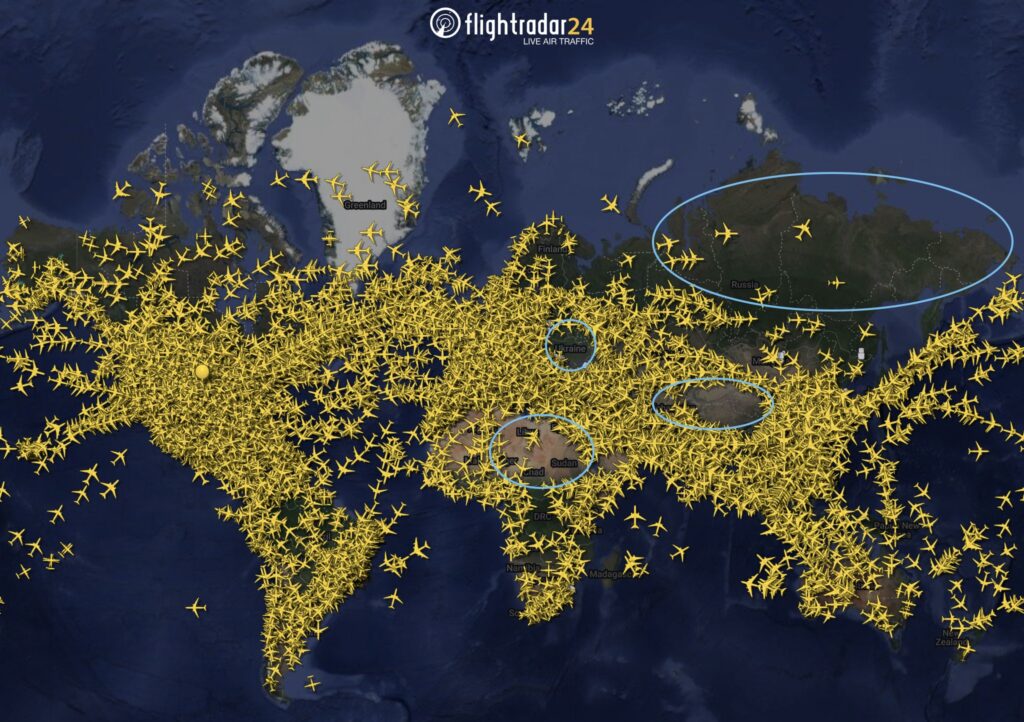
A plane tracker serves as a valuable tool for aviation enthusiasts, travelers, and professionals alike. This technology enables users to monitor the real-time location of flights, providing updates on arrival and departure times, as well as flight status. With the increasing number of flights and airports worldwide, having access to this information can enhance travel planning and improve safety awareness.
These trackers utilize radar and satellite data to compile detailed information about commercial and private aircraft. People can access various features, such as flight paths and aircraft details, often through user-friendly apps or websites. This capability allows for a deeper engagement with air traffic, making it particularly appealing for those interested in aviation history or current events.
In an era where real-time information is vital, plane trackers have become an essential resource. By understanding how they work and what they offer, individuals can take advantage of flight tracking to make informed decisions and stay updated on their travel plans.
Basics of Plane Tracking
Plane tracking involves the monitoring and identification of aircraft movements. This process is essential for various applications, including aviation safety, flight planning, and logistics management. Understanding the key aspects of plane tracking can benefit users in multiple sectors.
Definition and Purpose
Plane tracking refers to the use of technology to monitor and record the position, altitude, speed, and direction of aircraft in real-time. It enables air traffic controllers, airlines, and enthusiasts to keep track of flights. The primary purpose is to enhance safety and efficiency in the aviation industry. By providing accurate information about aircraft locations, tracking systems help prevent collisions and improve flight scheduling.
Types of Plane Tracking Systems
There are several types of plane tracking systems, each serving specific needs. The main systems include:
- Radar Tracking: Uses ground-based radar to detect aircraft within a specific range. This method is commonly used for air traffic control.
- Satellite Tracking: Relies on satellites to provide global coverage, ideal for tracking flights over oceans or remote areas.
- ** ADS-B (Automatic Dependent Surveillance–Broadcast)**: Allows aircraft to transmit their position using GPS, which can then be received by ground stations and other aircraft.
Each system has its advantages and limitations, depending on factors such as cost, coverage, and accuracy.
Key Components of Plane Trackers
Plane trackers consist of several key components that work together to provide accurate tracking data:
- Transponders: Installed in aircraft, these devices send information about the aircraft’s identity and altitude back to ground stations.
- Ground Stations: These stations receive signals from aircraft and provide data to air traffic controllers and tracking systems.
- Data Integration Software: This software processes and displays tracking information, allowing users to visualize flight paths and real-time data.
Effective plane tracking relies on seamless communication between these components to ensure reliability and accuracy in aircraft monitoring.
Technologies Behind Plane Trackers
Plane trackers utilize various technologies to provide real-time information about aircraft movements. The main systems include radar tracking, satellite-based tracking, and ADS-B technology. Each of these plays a crucial role in how air traffic is monitored and managed.
Radar Tracking Technology
Radar tracking technology relies on ground-based radar systems to detect aircraft. This system works by emitting radio waves that reflect off an airplane, allowing the radar to calculate the plane’s position, speed, and direction.
There are two main types of radar systems used: primary and secondary. Primary radar can detect objects and determine their distance but does not provide aircraft identification. Secondary radar, on the other hand, communicates with the aircraft’s transponder to receive additional data, including identification codes and altitude.
This technology is widely used at airports and air traffic control centers, providing situational awareness to air traffic controllers and enhancing flight safety.
Satellite-Based Tracking
Satellite-based tracking leverages global positioning systems (GPS) to monitor aircraft positions. Satellites orbiting Earth send signals to aircraft equipped with GPS receivers, enabling precise location data transmission.
This method allows tracking over vast distances, including remote areas where radar coverage may be limited. Additionally, it enhances the accuracy of flight paths and reduces the chances of communication failures between aircraft and ground control.
Satellite systems can also integrate with other technologies to improve data sharing and support global air traffic management.
ADS-B Technology
Automatic Dependent Surveillance–Broadcast (ADS-B) is an advanced surveillance technology that broadcasts aircraft information periodically. Equipped with GPS, aircraft transmit their position, speed, and altitude to ground stations and other nearby aircraft.
This real-time information enhances situational awareness for both air traffic controllers and pilots. It serves to improve collision avoidance, especially in areas lacking traditional radar coverage.
Furthermore, ADS-B plays a vital role in increasing the efficiency of air traffic management, with its data utilized for automated systems and integrating information into flight tracking applications.
Usage and Applications
Plane trackers have a variety of essential applications in the aviation industry. They play a crucial role in air traffic management, enhancing flight safety, and are increasingly utilized by individuals and businesses.
Air Traffic Management
Air traffic management relies heavily on plane tracking technology to maintain safety and efficiency. Air Traffic Control (ATC) uses real-time data to monitor aircraft positions, speeds, and altitudes.
This information allows controllers to provide instructions to pilots, ensuring safe distances between planes. Additionally, it helps manage the flow of air traffic in congested airspaces, coordinating takeoffs and landings.
Integration with radar and satellite systems improves the accuracy of tracking, reducing the risk of accidents and delays.
Flight Safety and Investigation
In incidents involving air travel, plane trackers play a pivotal role in enhancing flight safety. They provide data for flight path analysis, which is crucial for understanding incidents or accidents.
Investigators can access historical flight data to analyze performance, weather conditions, and air traffic interactions leading up to an event. This information assists airlines and regulatory bodies in enforcing safety protocols and improving operational standards.
Moreover, tracking systems enable real-time responses to emergencies, allowing search and rescue operations to locate missing aircraft efficiently.
Personal and Commercial Use
Individuals and businesses increasingly use plane trackers for various purposes. Aviation enthusiasts utilize these tools to follow flights, learn about air travel patterns, and observe airlines’ operations.
For commercial entities, tracking provides operational benefits, such as monitoring shipments and ensuring timely deliveries. Companies involved in logistics can enhance their services by offering customers real-time updates on cargo flights.
Additionally, tracking apps and websites are popular among travelers, allowing them to check flight statuses, gate changes, and delays conveniently.

Leave a Reply